Navigating Oklahoma Home Inspections: A Guide For Homebuyers
Home Run Inspections, LLC was named an expert on Redfin in home inspections. Check out the article we were featured in: Oklahoma Home Inspection Guide for Homebuyers | Redfin
Home Run Inspections, LLC was named an expert on Redfin in home inspections. Check out the article we were featured in: Oklahoma Home Inspection Guide for Homebuyers | Redfin
Screens missing is one of the mast common finds on a home inspection.
Using your windows in the spring and the fall helps to keep the sash functional and avoid costly repairs. Regular use also will help the home owner identify window problems as they arise.

In order to understand soffit integrity, let’s define exactly what a soffit is. The soffit is the material beneath the eave or roof overhang at the edges of your roof. Soffits can also be on the underside of a porch or patio. They are made of a variety of materials from wood to vinyl, and to ensure proper attic ventilation, they are often vented.
Soffit integrity refers to the condition this material is in. Over time, soffit material can become damaged by the elements or by construction of some type. This condition, left unchecked, can lead to easy access for a variety of pest including birds, insects, and larger wildlife like squirrels and raccoons. Fortunately, most pest are opportunist, meaning they simply take advantage of a condition that already exists. 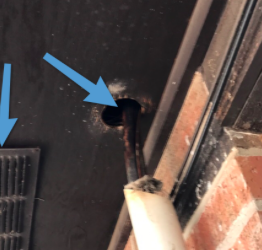
By ensuring that your soffits are sealed and in good condition, you stand a very good chance of making sure your neighborhood wildlife does not decide to take up residence in your attic. Making a visual inspection of your home on an annual basis, if not seasonally, is a good practice. Note any damage and repair immediately to avoid costly damage to your home and costly pest removal.
Home Run Inspections, LLC
Oklahoma: 405-905-9175
Florida: 850-203-3239
We Cover All the Bases!
Schedule Your Inspections Online at:
Like us on FaceBook
Follow us on Twitter
Follow us on Instagram

Like all cultures around the world, America has a lot of traditions. These rituals run deep in our culture and are strongly reflected in our holiday movies that we watch at this time of year. A message that runs through all of them is the need to be at home for the holidays. Home and family provide us with some of the most stressful times in our year as well as some of the most heartwarming and memorable.
Being home for the holidays means traveling for many as families come together. This special time may be the only time of the year family members spend time with each other in the same room, and there are lots of opportunities for mishaps. Fortunately, with some planning, most of these can be avoided.
Here are a few tips, from a home inspector’s point of view, to ensure the memories you make this holiday season will be the ones you intended to make:
The world comes at all of us at a super fast pace. Being home for the holidays is a perfect time to slow down, create and savor the moments that make life beautiful.
From all of us at Home Run Inspections, we wish you a Happy Thanksgiving and Holiday season.
We Cover All the Bases!
Home Run Inspections, LLC
Oklahoma: 405-905-9175
Florida: 850-203-3239
Info@HomeRunInspections.com
Serving the Oklahoma City metro and surrounding areas including Edmond, Yukon, Piedmont, Bethany, El Reno, Tuttle, Mustang, Moore, Norman, Midwest City, Del City, Choctaw, McCloud, Shawnee, Harrah, Newalla, Jones, and more.
Serving the Florida Panhandle metro areas including Destin, Fort Walton Beach, Okaloosa Island, Miramar Beach, Santa Rosa Beach, Niceville, Shalimar, Freeport, Crestview, DeFuniak Springs, Panama City Beach, and more.
Schedule Your Inspections Online at:
Like us on FaceBook
Follow us on Twitter
Follow us on Instagram

It’s time for daylights savings, and accordingly the sun will rise and set earlier. Correspondingly, the shortened evenings can be a real bummer. This is a great time for some home maintenance. After manually changing your clocks, take care of a few other essential tasks.
Let us know if you have any questions; we’re here for you!
Scott Price & The All Star Team
Home Run Inspections, LLC
Licensed, Insured, Certified, Professional, Master Inspectors
OK (405) 905-9175 * FL (850) 203-3239
www.HomeRunInspections.Com – – Schedule Inspections Online 24/7!
We Cover All the Bases
Schedule Your Inspections Online at:
Like us on FaceBook
Follow us on Twitter
Follow us on Instagram
If you live in a warm climate such as Oklahoma or Northwest Florida, one of your first concerns should be to keep your family cool during the warm-weather seasons. Here is some important information regarding air conditioner life expectancy, how to extend life expectancy, and why to get a home inspection.
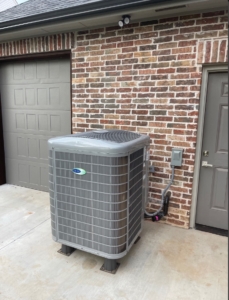
We discuss air conditioner life expectancy in every inspection report. We provide the age of each system we inspect (when there is a legible label on the equipment). Inspectors perform a visual inspection of the system and test the system to determine if the system is functioning properly. We do this by comparing the temperatures between the return air side of the system to the supply side. Generally, the difference should be between 13 and 25 degrees.
When outdoor temperatures are too cool, inspectors do not run the air conditioning system. Per manufacturers, cooling equipment should not be operated when outdoor temperatures are below 65 degrees within the past or future 24 hours. However, a licensed HVAC professional can use special equipment for testing A/C systems during cold weather.
Just because its an old air conditioner, does not mean it can’t cool a home. All of our inspectors have stories of testing HVAC equipment from the 1980’s that is still working exactly like it should. 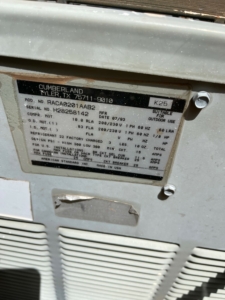
What home buyers need to understand is that inspections are a “snapshot in time”. Meaning, it may not be cooling the home tomorrow. A good inspector will always educate his customers that inspectors cannot predict the future. Contrary to popular opinion, at the conclusion of a home inspection, we do not give it a pass or fail. We simply provide a much more in depth look at a home for the purchaser of our inspection.
An added variable is the reality that “they don’t make them like they used to”. Just ask anyone over 4o years of age or anyone with experience working on or replacing equipment. “Built in obsolescence” is part of most expensive purchases in American culture today. The idea stems from the manufacturer’s perspective. That is, if they build something to last too long, they won’t be able to sell enough products to stay in business. For example, cable manufacturers discovered years ago that if they put cayenne pepper into the exterior coating on cable that squirrels wouldn’t chew it and damage it. Guess what happened. It worked great! So well in fact that their sales of cable plummeted. Long story short, cayenne pepper is no longer part of the cable manufacturing process.
Another consideration regarding air conditioner life expectancy is the placement/location of the unit and what region the unit is located in. Air conditioner condensing units take much more of a beating from the environment than their counterparts located in the interior of a home. Units that are protected by shade have a better life expectancy than those exposed to the evening sun or located on rooftops. Units located on inland homes have a better life expectancy than units located on coastal homes that are exposed to humid, salty air for their entire lives.
It’s important to locate the unit on a level surface above the soil grade and have a guttering rain diverter over the unit (if applicable). Also, keep vegetation from growing near or on the unit. The inspection report will call out any of these issues that need to be addressed in order to extend the life of the air conditioner.
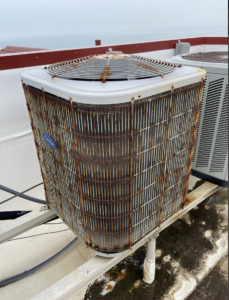
It’s important to spend a little extra money on the seasonal maintenance of your air conditioner at the beginning of every Spring/Summer cooling season. Hire a licensed HVAC professional to service and inspect your air conditioning equipment. They will inspect for potential and existing issues, clean the equipment, check the refrigerant levels, and change the filters.
After you have been inspecting homes for years, you start to see patterns. I’m sure that’s common in any industry. We’ve been in business since 2015. One of the first patterns we noticed from the start, and it continues to this day, is a common practice to put a home up for sale when the major equipment is at or past its life expectancy and due for an update. This includes heating/cooling systems, roof coverings, well and septic systems, water heaters, and kitchen appliances. Knowing this is a common practice should encourage all home buyers to prioritize getting a home inspection, no matter what the real estate market is like at the moment.
Home Run Inspections, LLC
www.HomeRunInspections.com – – Schedule Online 24/7!
Oklahoma: 405-905-9175
Florida: 850-203-3239
Info@HomeRunInspections.com
Serving the Oklahoma City metro and surrounding areas including Edmond, Yukon, Piedmont, Bethany, El Reno, Tuttle, Mustang, Moore, Norman, Midwest City, Del City, Choctaw, McCloud, Shawnee, Harrah, Newalla, Jones, and more.
Serving the Northwest Florida Panhandle metro and surrounding areas including Destin, Fort Walton Beach, Okaloosa Island, Miramar Beach, Santa Rosa Beach, Niceville, Shalimar, Freeport, Crestview, DeFuniak Springs, Panama City Beach, and more.
Schedule Your Inspections Online at:
Like us on FaceBook
Follow us on Twitter
Follow us on Instagram
 Stairs Maintenance
Stairs MaintenanceStructural Integrity: All stairs must be kept structurally sound. Don’t forget to examine the basement stairs. Check the area where they meet the floor and where they are attached to the floor joists above.
Stair Width and Clearance: Stairways should have a minimum headroom of 6 feet and 8 inches, and width of 3 feet.
Treads and Risers: The riser of a stair is the height of the step. The tread is the step’s depth. Riser heights and tread depths should be as uniform as possible. All treads should be level and secure. As a guide, stairs in new homes must have a maximum riser height of 7-3/4 inches and a minimum tread depth of 10 inches. The maximum difference in height for risers and depth for treads should not exceed 3/8-inch.
Handrails and Guardrails: You can check a railing’s stability and its fastenings by shaking it vigorously. Handrails are normally required to be 34 to 38 inches above the stair nosing on at least one side of all stairways having three or more risers. Guardrails are required on open sides of stairways and should have intermediate rails that do not allow the passage of a sphere 4 inches in diameter.
Lighting: All interior and exterior stairways should have a means to illuminate the stairs, including landings and treads. Interior stairways should have a light located at each landing, except where a light is installed directly over each stairway section. Public stair and hallway lights in multi-family buildings should be operable from centralized controls.
Smoke Detectors: In addition to having them installed in each bedroom or in hallways adjacent to each bedroom, smoke detectors should be installed above stairways and hallways. They should be located on or near the ceiling, near the heads of stairs, and away from corners. Periodically check the operation of all smoke detectors by pushing their test buttons.
#stairs #stairmaintenance #stairsafet
Home Run Inspections, LLC
Oklahoma: 405-905-9175
Florida: 850-203-3239
We Cover All the Bases!
Serving the Oklahoma City metro and surrounding areas including Edmond, Yukon, Piedmont, Bethany, El Reno, Tuttle, Mustang, Moore, Norman, Midwest City, Del City, Choctaw, McCloud, Shawnee, Harrah, Newalla, Jones, and more.
Also Now Serving the Florida Panhandle metro areas including Destin, Fort Walton Beach, Okaloosa Island, Miramar Beach, Santa Rosa Beach, Niceville, Shalimar, Freeport, Crestview, DeFuniak Springs, Panama City Beach, and more.
Schedule Your Inspections Online at:
Like us on FaceBook
Follow us on Twitter
Follow us on Instagram
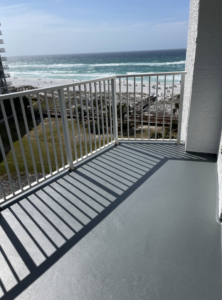
Don’t you wish you would have purchased that beach condo a couple of years ago or in 2009?!
As of the writing of this article, the real estate market has gone through some serious post pandemic adjustments. For example, housing prices have nearly doubled in some areas, and beach condos have more than doubled in price.
High purchase prices combined with a shortage of inventory have led many buyers to consider skipping the home inspection. Add in the fact that many beach condos have a very small square footage, and a buyer may feel the inspection is unnecessary.
Spending around $300 for an inspection of a $500,000+ investment is actually a bargain.
Common issues I find in beach condo inspections in the Destin, Florida Emerald Coast areas are: aging or non-functional HVAC systems, fogged thermal seals at windows, deteriorating hardware, and moisture intrusion from condo units on the next level.

So, whether you get your condo inspected before or after the purchase, you’ll have a good list of the repairs and upgrades to budget for over the life span of your ownership.
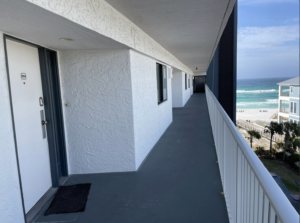
Call us for your condo inspection; we’re here for you
Home Run Inspections, LLC
Oklahoma: 405-905-9175
Florida: 850-203-3239
We Cover All the Bases!
Serving the Oklahoma City metro and surrounding areas including Edmond, Yukon, Piedmont, Bethany, El Reno, Tuttle, Mustang, Moore, Norman, Midwest City, Del City, Choctaw, McCloud, Shawnee, Harrah, Newalla, Jones, and more.
Also Now Serving the Florida Panhandle metro areas including Destin, Fort Walton Beach, Okaloosa Island, Miramar Beach, Santa Rosa Beach, Niceville, Shalimar, Freeport, Crestview, DeFuniak Springs, Panama City Beach, and more.
Schedule Your Inspections Online at:
Like us on FaceBook
Follow us on Twitter
Follow us on Instagram
Home-buyers will often ask “what is a WDO inspection?”. WDO stands for Wood-Destroying Organisms. These are pests that can cause serious problems in the wooden structural components of a home. That’s why an infestation may go unnoticed until the damage is already extensive. Control measures include preventing insect entry by sealing holes and cracks and hiring a professional to apply chemicals for remedial treatment. The most common types of destructive insects are termites and ants.
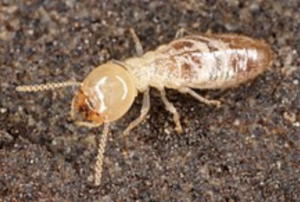 Subterranean termites are the most damaging insects of wood. Their presence is often hard to notice, and damage usually is found before the termites are seen. You should take measures to prevent infestations, which may require hiring a pest-control service.
Subterranean termites are the most damaging insects of wood. Their presence is often hard to notice, and damage usually is found before the termites are seen. You should take measures to prevent infestations, which may require hiring a pest-control service.
If you see the following signs in your house, you might have termites:
Carpenter bees resemble bumblebees, but typically have a shiny, hairless abdomen (bumblebees usually have a hairy abdomen with black and yellow stripes. The carpenter bees also have different nesting habits. Bumblebees nest in an existing cavity often underground (abandoned rodent burrows), whereas carpenter bees tunnel into wood to lay their eggs.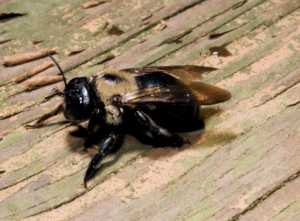
The carpenter bee is so-called because of where it chooses to make its home. They are solitary bees and are not part of a larger hive community. Instead, they burrow into soft woods, such as the siding of a house, to live in and lay larvae. The female carpenter bee is the one who makes the hole by chewing through the wood.
Wood-destroying fungus or fungi causes more damage to structures than all the fires, floods, and termites combined! Wood decaying fungus requires four fundamentals to survive which are oxygen, favorable temperatures, water, and food. Fungus occurs generally when the moisture content of wood exceeds 20 to 30 percent, coupled with optimal temperatures (32 ̊ – 90 ̊ F), an adequate supply of oxygen and a suitable source of energy and nutrients.
There are several different kinds of fungus including White Rot Fungi, Brown Rot Fungi, and Soft Rot Fungi.
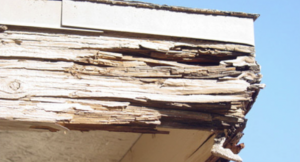
Water is the enemy of wood! Moisture control must be an integral part of any plan designed for the prevention of wood decay fungi.
Regular inspections of your home are an important part of home maintenance. Inspecting for wood-destroying insects and organisms can alert you to possible infestations in the wooden structural components of your home – – a serious problem that often goes undetected for a long time and can cause major damage to your home.
The inspector will thoroughly, visually inspect the exterior and interior of the home top to bottom inside and out. They know what to look for and where to look for the most common types of evidence of wood-destroying organisms.
Call your pest control professional or qualified InterNACHI inspector for your annual WDO Inspection, and protect your home from wood-destroying organisms.
In Oklahoma City we are Licensed and Insured to inspect for WDOs. In Florida, we are in the process of securing the same credentials. Until then, a company we have personally used is: Bryan Pest Contr
Home Run Inspections, LLC
Oklahoma: 405-905-9175
Florida: 850-203-3239
We Cover All the Bases!
Serving the Oklahoma City metro and surrounding areas including Edmond, Yukon, Piedmont, Bethany, El Reno, Tuttle, Mustang, Moore, Norman, Midwest City, Del City, Choctaw, McCloud, Shawnee, Harrah, Newalla, Jones, and more.
Also Now Serving the Florida Panhandle metro areas including Destin, Fort Walton Beach, Okaloosa Island, Miramar Beach, Santa Rosa Beach, Niceville, Shalimar, Freeport, Crestview, DeFuniak Springs, Panama City Beach, and more.
Schedule Your Inspections Online at:
Like us on FaceBook
Follow us on Twitter
Follow us on Instagram
When we identify improper installation of a home’s system or fixture, we include it in the inspection report as a recommendation with photos (and video when applicable) and an explanation of who, what and why. For example, we might recommend to have a qualified professional repair the improper installation to restore proper functionality, to prevent damage to materials, and/or for personal safety. Inspectors do not diagnose problems, and we do not determine the method of repair. We leave those tasks to the qualified professional making the repair.
This dryer vent is a good example of improper installation (see photo). The dryer vent is functional, but it is not properly installed. The white dryer vent cover/louver should be flush with the masonry siding and sealed around the edges to prevent moisture and pest intrusion.
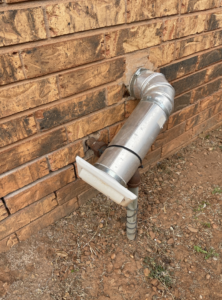
Inspecting homes is an art form. Inspectors look for defects in home systems including improper installation. We get loads of training initially for licensing as well as continuing education annually. I have found a lot of the classroom training to be very beneficial, but nothing beats the on-the-job experience.
Inspecting a home and all its various systems is a big job. It can be intimidating to try to catch all the things that may be wrong with a home. After about 100 inspections, an inspector starts to see patterns. Improperly installed systems start to jump out at us.
Having an experienced Home Inspector give your potential new home a good inspection is invaluable. You will receive a wealth of information including recommendations for problems that need to be addresse
Home Run Inspections, LLC
Oklahoma: 405-905-9175
Florida: 850-203-3239
We Cover All the Bases!
Serving the Oklahoma City metro and surrounding areas including Edmond, Yukon, Piedmont, Bethany, El Reno, Tuttle, Mustang, Moore, Norman, Midwest City, Del City, Choctaw, McCloud, Shawnee, Harrah, Newalla, Jones, and more.
Also Now Serving the Florida Panhandle metro areas including Destin, Fort Walton Beach, Okaloosa Island, Miramar Beach, Santa Rosa Beach, Niceville, Shalimar, Freeport, Crestview, DeFuniak Springs, Panama City Beach, and more.
Schedule Your Inspections Online at:
Like us on FaceBook
Follow us on Twitter
Follow us on Instagram
Proudly providing inspection services to the OKC metro and surrounding areas from Guthrie to Purcell, El Reno to Shawnee, and everything in-between.
Proudly providing inspection services to Walton County Florida & Surrounding Counties & Areas including Bay County, Okaloosa County, Holmes County, Washington County, Freeport, Defuniak Springs, Niceville, Santa Rosa Beach, Miramar, Destin, Fort Walton Beach, Navarre, Crestview, Pace, & More!
